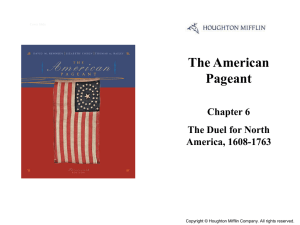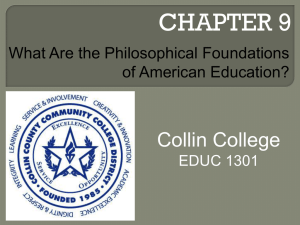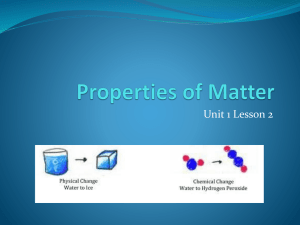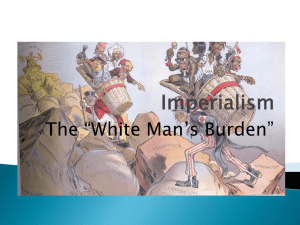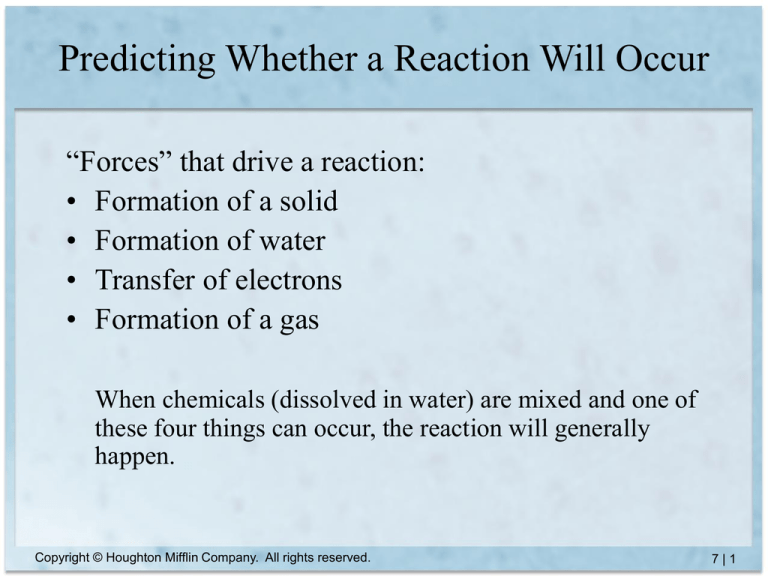
Predicting Whether a Reaction Will Occur
“Forces” that drive a reaction:
• Formation of a solid
• Formation of water
• Transfer of electrons
• Formation of a gas
When chemicals (dissolved in water) are mixed and one of
these four things can occur, the reaction will generally
happen.
Copyright © Houghton Mifflin Company. All rights reserved.
7|1
Dissociation
• Ionic compounds
– Metal + nonmetal (Type I & II)
– Metal + polyatomic anion
– Polyatomic cation + anion
• Dissociation: When ionic compounds dissolve in
water the anions and cations are separated from
each other.
• We know that ionic compounds dissociate when
they dissolve in water because the solution
conducts electricity.
Copyright © Houghton Mifflin Company. All rights reserved.
7|2
Dissociation (cont.)
• Potassium chloride dissociates in water into
potassium cations and chloride anions.
KCl(aq) = K+ (aq) + Cl- (aq)
K
Cl
K+
Cl-
• Copper(II) sulfate dissociates in water into
copper(II) cations and sulfate anions.
CuSO4(aq) = Cu+2(aq) + SO42-(aq)
Cu SO4
Copyright © Houghton Mifflin Company. All rights reserved.
Cu+2
SO427|3
Precipitation Reactions
• In all precipitation reactions, the ions of one
substance are exchanged with the ions of another
substance when their aqueous solutions are mixed.
• At least one of the products formed is insoluble in
water.
KI(aq) + AgNO3(aq) KNO3(aq) + AgIs
K+
Ag+
K+
Ag
I-
NO3-
Copyright © Houghton Mifflin Company. All rights reserved.
I
NO37|4
Process for Predicting the
Products of a Precipitation Reaction
• Determine what ions each aqueous reactant has.
• Exchange ions.
– (+) ion from one reactant with (-) ion from other
• Balance charges of combined ions to get formula
of each product.
• Balance the equation.
– Count atoms.
• Determine solubility of each product in water.
– Use solubility rules.
– If product is insoluble or slightly soluble, it will
precipitate.
Copyright © Houghton Mifflin Company. All rights reserved.
7|5
Solubility Rules
• Most compounds that contain NO3- ions are
soluble.
• Most compounds that contain Na+, K+, or
NH4+ ions are soluble.
• Most compounds that contain Cl- ions are
soluble, except AgCl, PbCl2, and Hg2Cl2
• Most compounds that contain SO42- ions are
soluble, except BaSO4, PbSO4, CaSO4
Copyright © Houghton Mifflin Company. All rights reserved.
7|6
Solubility Rules (cont.)
• Most compounds that contain OH- ions are
slightly soluble (will precipitate), except
NaOH and KOH, which are soluble, and
Ba(OH)2, Ca(OH)2, which are moderately
soluble.
• Most compounds that contain S2-, CO32-, or
PO43- ions are slightly soluble (will
precipitate).
Copyright © Houghton Mifflin Company. All rights reserved.
7|7
Predict what will happen when the
following solutions are mixed:
• AgNO3(aq) and NH4Cl(aq)
• Na3PO4(aq) and Co(NO2)2(aq)
• K2CrO4(aq) and Pb(C2H3O2)2(aq)
Copyright © Houghton Mifflin Company. All rights reserved.
7|8
Describing Reactions in Aqueous Solutions
• Molecular equations: equations that show the
complete formulas of all reactants and products
Example:
• Ionic equations: All substances that are strong
electrolytes are represented as ions. Solids are not
written as separate ions.
Example:
Copyright © Houghton Mifflin Company. All rights reserved.
7|9
Describing Reactions in Aqueous Solutions (cont.)
• Spectator ions: ions that do not participate in the
reaction
Example:
• Net ionic equation: Only the components directly
involved the reaction are written.
Example:
Copyright © Houghton Mifflin Company. All rights reserved.
7 | 10
Write molecular, complete ionic, and net
ionic equations for the following reaction:
• nickel(II) sulfate and barium chloride
Copyright © Houghton Mifflin Company. All rights reserved.
7 | 11
Write molecular, complete ionic, and net
ionic equations for the following reaction:
• iron(III) nitrate and sodium hydroxide
Copyright © Houghton Mifflin Company. All rights reserved.
7 | 12
Reactions that Form Water: Acids and Bases
• When acids dissociate in water they release H+ ions
and their anions.
HBr
H2O
+
H (aq)
-
Br (aq)
+
• When bases dissociate in water they release or form
OH- ions and their cations.
M g(O H)2
H2O
Copyright © Houghton Mifflin Company. All rights reserved.
Mg
2+
(aq)
+
-
2O H (aq)
7 | 13
Acid-Base Reactions
• In the reaction of an acid with a base, the H+ from
the acid combines with the OH- from the base to
make water.
• The cation from the base combines with the anion
from the acid to make the salt.
acid + base salt + water
H2SO4(aq) + Ca(OH)2(aq) CaSO4(aq) + 2 H2O(l)
• The net ionic equation for a strong acid-strong base
reaction is always:
H+ (aq) + OH- (aq) H2O(l)
Copyright © Houghton Mifflin Company. All rights reserved.
7 | 14
Erucic Acid (a weak acid from marsh marigold)
Copyright © Houghton Mifflin Company. All rights reserved.
7 | 15
Complete the following acid-base reactions:
HCl(aq) + RbOH(aq) →
HNO3(aq) + LiOH(aq) →
Copyright © Houghton Mifflin Company. All rights reserved.
7 | 16
Oxidation-Reduction Reactions
• Oxidation-reduction reactions: reactions
that involve a transfer of one or more
electrons
• The substance that loses electrons in the
reaction is oxidized. The substance that
gains electrons in the reaction is reduced.
Copyright © Houghton Mifflin Company. All rights reserved.
7 | 17
Reactions of Metals with
Nonmetals (Oxidation-Reduction)
• The metal loses electrons and becomes a cation (oxidation)
• The nonmetal gains electrons and becomes an anion
(reduction)
• In the reaction, electrons are transferred from the metal to the
nonmetal.
2K(s) + F2(g) → 2KF(s)
metal
nonmetal
Copyright © Houghton Mifflin Company. All rights reserved.
7 | 18
2K (s)
K
+
1e
F 2 (g)
2K F (s)
-
K
+1
F
1e
-
F
-1
F
K
Copyright © Houghton Mifflin Company. All rights reserved.
K
+1
F
-1
7 | 19
Characteristics of Oxidation-Reduction Reactions
• Metal + nonmetal ionic compound (solid)
• In the ionic compound the metal is now a cation
and the nonmetal is an anion.
• Two nonmetals can undergo an oxidation-reduction
reaction. Look for O2 as a reactant or product. In
this case the products are not ionic.
• Examples:
Copyright © Houghton Mifflin Company. All rights reserved.
7 | 20
Ways to Classify Reactions
• Precipitation reactions: reactions that involve solid formation.
Example:
• Double displacement reactions: ion exchange reactions
AB + CD → AD + CB
Example:
• Acid-base reactions: reactions that involve water formation
Example:
• Both precipitation reactions and acid-base reactions involve
compounds exchanging ions.
Copyright © Houghton Mifflin Company. All rights reserved.
7 | 21
Ways to Classify Reactions (cont.)
• Oxidation-reduction reactions: reactions that involve electron transfer
Example:
Also classified as a single displacement reaction:
A + BC → B + AC
• Combustion reactions: reactions in which O2(g) is reacted with a
carbon compound
–
–
–
Release a lot of energy
Subclass of oxidation-reduction reactions
Example:
Copyright © Houghton Mifflin Company. All rights reserved.
7 | 22
Other Ways to Classify Reactions
• Synthesis reactions: reactions in which chemicals
combine to make one product
– Metal + nonmetal reactions can be classified as
synthesis reactions.
Example:
– Reactions of metals or monmetals with O2 can be
classified as synthesis reactions.
Example:
• These two types of synthesis reactions are also
subclasses of oxidation-reduction reactions.
Copyright © Houghton Mifflin Company. All rights reserved.
7 | 23
Other Ways to Classify Reactions
• Decomposition reactions: reactions in which one
reactant breaks down into simpler compounds or
elements
• Generally initiated by addition of electric current
or heat
Example:
• Opposite of a synthesis reaction
Copyright © Houghton Mifflin Company. All rights reserved.
7 | 24
Summary of Classes of Reactions
Copyright © Houghton Mifflin Company. All rights reserved.
7 | 25
Classify the following reactions in as many ways as possible:
C(s) + O2(g) → CO2(g)
Zn(s) + 2HBr(aq) → H2(g) + ZnBr(aq)
2KClO3(s) → 2KCl(s) + 3O2(g)
H2SO4(aq) + Ba(OH)2(aq) → 2H2O(l) + BaSO4(s)
Copyright © Houghton Mifflin Company. All rights reserved.
7 | 26


